am Albright
waking up the arts

IN THIS ISSUE
Student Spotlights
Parallels and Rupture Curatorial Review
Alumni Spotlights
Student Business



IN THIS ISSUE
Student Spotlights
Parallels and Rupture Curatorial Review
Alumni Spotlights
Student Business

As artists, we all have our own medium, and even more importantly, our own story to tell. Whether it's music, art, theater, writing or even fashion, we're apt to explore the concepts that mean the most to us. Albright College's Arts Magazine's Spring 2024 issue is just a small relic of how far students, faculty and alumni have come at Albright, and how far we have to go.
While times have been uncertain, Albright has always felt to me like more than a college, but a family. Whether it's the student art show, Domino Player performances, concerts, open-mics or celebrations, we always find the time to support one another.
Every student, faculty and alumnus featured in this magazine has made an undeniable impact on Albright that is sure to resonate for years to come.
Michael Gruber, a music industry studies major, has found himself as a one-man with the all encompassing studies of his major. Laurel Gingrich has combined her passion for fashion and writing to create a one-of-a-kind blog. Likewise, Alyssa Zerbe combines her interdiscplinary passions in art and psychology to create unique works of art. Jesus Orellana has found an unwavering love for creative writing while at Albright and Zycara Jones has found herself alongside the Domino Players. These are just some of the many stories that make being an Albrightian so special.
A series of thank yous are in order. For Professor John Pankratz, whose photographs you will see throughout this magazine, for tirelessly supporting the endeavors of students. Professor Heidi Mau, our faculty adviser, for always uplifting AM. To Professor Matthew Garrison, who joined Albright in 2001 and will now be retiring after two decades of always putting his students first.
Of course, this wouldn't be possible without Alicia Cone and Kennedy Greene, who've not only supported AM as members, but have become two of my greatest friends. Alicia, thank you for always finding the time to help, and Kennedy, for always being the smiling face I could rely on for anything.
As you flip through these pages, whether you're an underclassman, graduating senior, faculty member or an alumni, I hope you're reminded of those special times with your Albright family and the unforgettable memories that you've made and that are yet to come.
Dylan Sokolovich Editor-in-ChiefEditor-in-Chief | Dylan Sokolovich
Co-Editor | Alicia Cone
Secretary | Kennedy Greene
Faculty Adviser | Dr. Heidi Mau
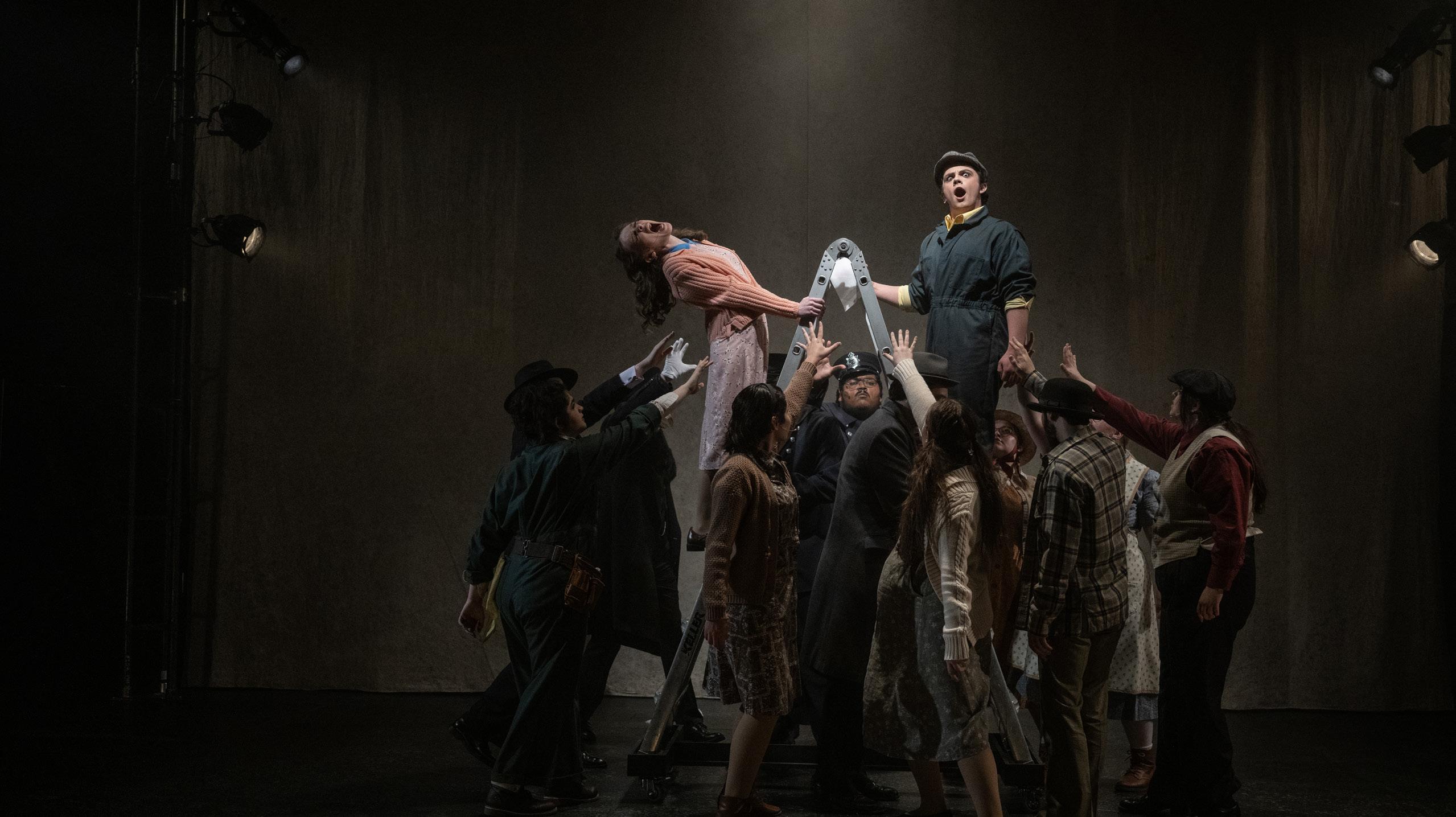
Many faces in the audience seemed curious of what they were going to see onstage for Albright College’s opening night of Urinetown. With toilet paper and a large, ripped cloth as the set, viewers were immediately hooked.
Urinetown was the directorial and choreographic debut of Albright junior Bejamin Galosi, who helped bring the epic adventure and musical to life on campus.
Urinetown is high energy from the moment it begins. Galosi makes this production come to life through his storytelling. Urinetown is a story that deals with a part of lower-class society. In the satirical comedy, citizens must pay to use the commode or else face possible jail time if they do not have the means.
“The class divide in the musical is very important,” says Galosi. For him, the musical was able to showcase the insane class divide that is still prevalent today. He spoke about a ruling class that gets to float above.
This well-thought-out musical took a lot of dedication to ensure that all those tiny little things down to inhales onstage and head bumps were right on cue. Galosi says he took a tremendous amount of artistic risk, which was necessary for making the production. There was a lot of technical dedication on his part. Galosi, having spent a lot of time on research has been working on the musical for one year. The cast began pre-production in February.
“It took everyone to do their homework for this musical to come together,” says Galosi. There were a lot of things that could have led to technical difficulties, like using a microphone to have a live band and even having a spinning ladder. As the Chorographer, Galso had to make sure that the props were safe and controllable.
He said the microphones were expensive and believes that one should grab what you can and make art out of it.
“We’re doing more musicals,” says Galosi, was one of the many reasons Urinetown was selected. Albright’s Theatre Department wants to make sure that
students get the full range of musical styles, and genres.
Galosi says, “Urinetown has a brassy feel. It was chosen because it contrasted with other pieces in the season well.”
Senior Artist in Residence, Jeffery Lentz, played a large part in bringing Urinetown to life alongside Galosi.
“Any musical is difficult. There are so many layers,” says Lentz. The musical held auditions in November and in January the ensemble learned all the music.
Lentz was as dedicated to the musical as Galosi. He made sure that everyone was on track with 15-hour work weeks and 18-hour singing rehearsals. By the time January rolled around he set up office hours to make sure everyone was prepared.
When choosing the cast characters, Galosi they had to be more than just great singers, they had to be great actors too. The musical showcased a diverse ensemble, with unique characters, that all had a depth to them.
“The actors learned their lines,” says Lentz, and that is why looking back he would not change anything. He included that leadership through Galosi is another reason why he would not change anything about how Urinetown came together.
How Director Galosi accomplished this musical was remarkable. The Pit Band, which was superb, practiced with the cast 4 times before opening.
It’s safe to say that because of total dedication from Galosi and Lentz, the production of Urinetown was able to life.
In his director’s note, Galosi shares that he passionate about our current culture. He mentions that the play’s cultural disease stems from ignorance. He believes that we exist in a bubble. He is referring to future generations. Once people leave, what are we leaving behind? This the reason that the baby was on stage in the final scene. It symbolizes what do we leave for the next generation to come. Galosi’s message is it doesn’t end with us.


Since arriving at Albright College, music industry studies major Michael Gruber ’24 has always found a way to learn, get involved and develop his passions. Gruber has become a self-proclaimed “one-man band” over the past four years as Albright has given him the opportunity to do everything he loves.
Gruber was drawn to Albright’s music industry studies program due to its emphasis on commercial music and its unique three-track structure, which encompasses artistry, business and production. This flexibility allowed him to delve into various aspects of music while maintaining his creative freedom.
“Sporadic,” Gruber describes his music with a laugh. “There’s some days where I’ll just get hit with an idea and demo three or four songs in a week or even a day. And then other times there will be like a wall, and being busy with classes and homework doesn’t always help the creative flow.”
Despite classwork and a heavy course load, Gruber still manages to remain flexible as a musical artist. A multi-instrumentalist, he started with bass before expanding his repertoire to include guitar, drums and vocals. His goal of becoming a one-person band aligns with their diverse skill-set and proficiency across instruments.
Gruber has been a part of numerous projects during his time at Albright. One standout experience was recording an album with “Bad Publicity,” a band composed of himself and two other Albright students, Olivia Holeva and Frankie Hagan. “Over the summer in 2023 we recorded an album here. We picked a week and just non-stop day after day after day we were in the studio recording things,” says Gruber.
In addition to “Bad Publicity,” Gruber showcases his musical range playing covers with groove bands and having recently started a hardcore group with Albright sophomore Zander Tesorierie called “Know Your Exits.” Together this semester they released their debut EP, “Count Backwards From Ten.” He also plays guitar for “Dog Box,” a band based in Northern Delaware.
Since his freshman year at Albright, Gruber has found a way to get involved with all things music happening on campus. At WXAC, the college’s student-run radio station, he hosts a show every Monday night and serves as the station’s program director. He is also the treasure of Lion Records, Albright’s student record label.
“Lion Records has been a lot of fun, I’m gonna miss it a lot. I’m gonna miss the radio,” says Gruber. Yet, he still has big plans for the future. After graduating, Gruber plans to continue working with his family’s stained glass business while exploring opportunities in the music industry, particularly in the Reading area. He hopes to leverage his experience at Albright to pursue a career that integrates his passion for music and entrepreneurial spirit.
“The music program here at Albright is a one-of-a-kind kind of deal. I don’t think I would have gotten this experience anywhere else,” says Gruber. “To be able to come here and make the music I want to make has been an unexplainable experience. I would definitely encourage people to pursue music here.”
Photos Courtesy of Michael Gruber

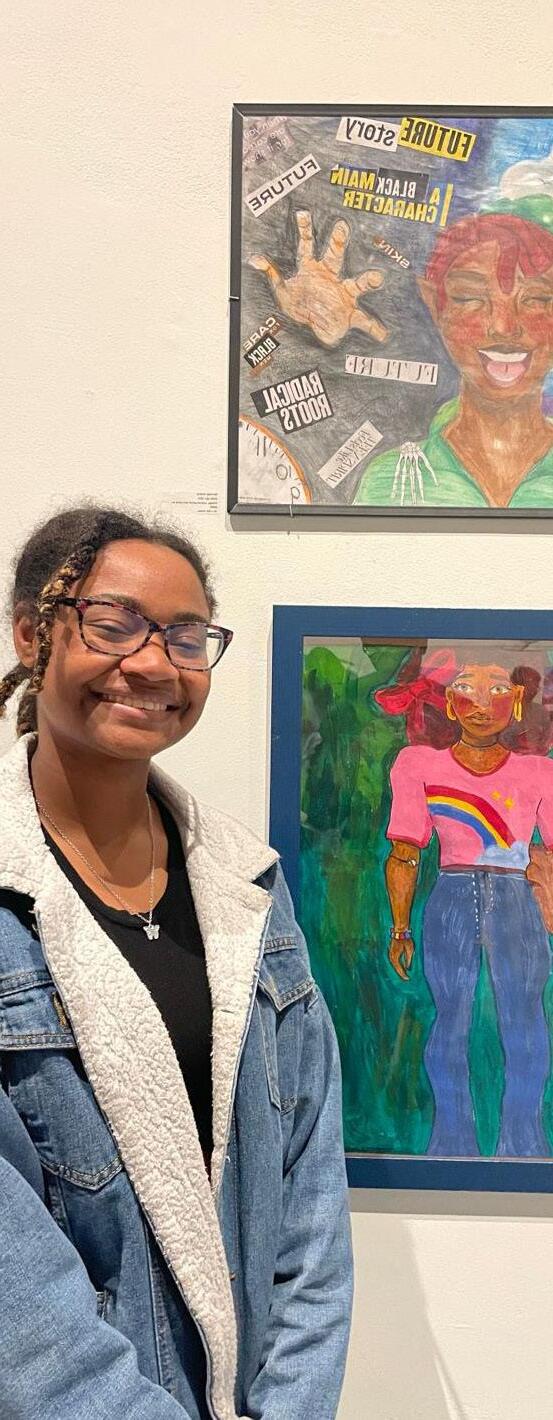
At Albright College’s 2023 Annual Juried Art Show, Digital Studio Art major Kennedy Greene stands alongside “Your Skin is a Gift” with a radiant smile on her face. The piece that helped her receive an honorable mention for that year’s show is a point-of-view of someone holding a Black Barbie doll, a piece that she says serves as a reminder to viewers that everyone is beautiful the way they are.
Although Greene has blossomed as an artist since her freshman year, her path in higher education wasn’t always so clear. “When I was thinking about college, I was mostly thinking about traditional visual art,” says Greene, “but when I found out that Albright had a Digital Studio Art program where I could do both visual and digital art I thought it would be great to lean into something with computers, and I’m glad I did because I ended up falling in love with it.”
Over her four years at Albright, Greene has transformed into a multimedia artist, seamlessly combining traditional art with digital art, photography, graphic design, layout design and even crochet. Currently, she is working on a piece called “Eve Weaves the World,” a crocheted Earth that is being held up by sculpted hands, which she plans to showcase at Albright’s annual student exhibition. “So, right now, I’m really happy to have an open mind to whatever comes along,” said Greene.
Greene references Rebecca Sugar, best known as the creator of the show “Steven Universe,” as her greatest inspiration. “I feel like that show influenced a whole generation of artists simply because it was able to take this really cute art style and then completely changed the game and talked about darker topics,” she said. When looking at Greene’s art, which is often playful and colorful, but deals with topics like mental health and the Black experience, Sugar’s influence is undeniable.
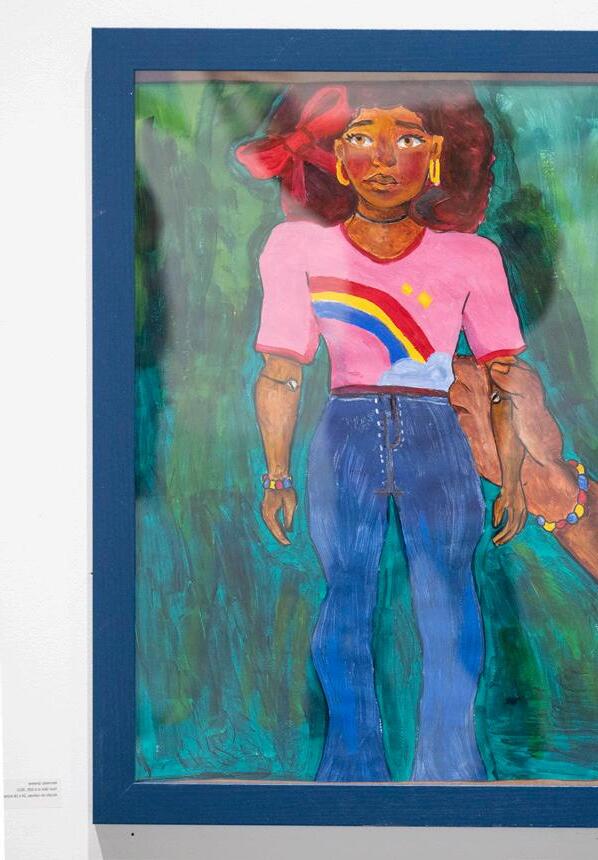
Albright has given Greene the opportunity to be incredibly active on campus. In addition to being the social media chair of the Arts Magazine, she is also very involved in Agon, Albright’s student-led art and literary journal, where she serves as the editor-in-chief, facilitates submissions and works on the journal’s layout. Greene is also a member of the Domino Players, Albright’s resident theater troupe, where she has served as the assistant stage manager of two productions, Spring 2023’s “Spring Awakening” and Fall 2023’s “The Big House,” and has worked the front of the house for numerous shows.
Greene has also worked as a peer educator in Albright’s Experiential Learning & Career Development Center since 2021, and has since started as the marketing head of their Instagram page. She is a member of Inroads, a non-profit organization that works specifically with People of Color to make sure they are given opportunities within the corporate sector. Through Inroads, Greene obtained an internship with Tinder during her sophomore year working as a product designer. During the summer of her junior year, she worked directly with Inroads as a talent management intern.
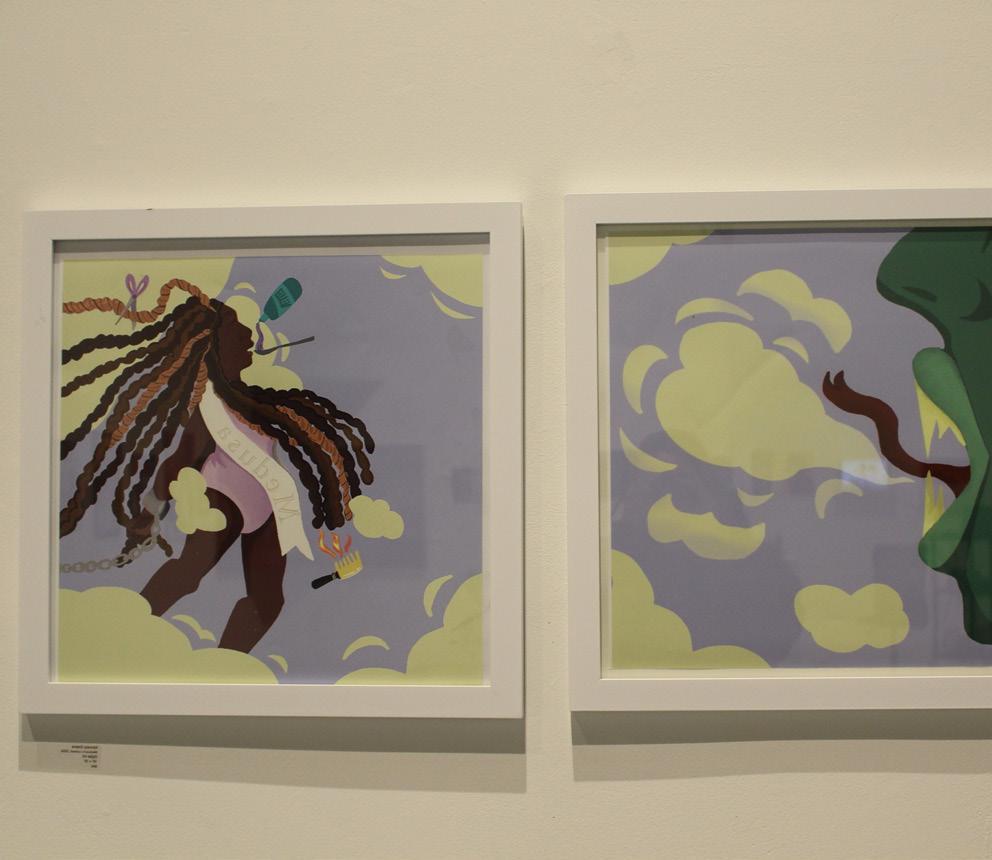
Greene is looking for internships or apprenticeships but plans to pursue a master's degree in communications soon. “I came into Albright thinking my studies were going to be completely art based, and then I ended up learning a lot about communications and journalism through AM and it made me want to pursue more, and I’ve even taken some classes because of it,” said Greene, who has since taken several public relations and advertising courses.
“Join AM and Agon, just support publications on campus,” added Greene, “support organizations on campus in general because they need help and they need people, and they’ll always be happy to help you along the way.”



 by Alicia Cone
by Alicia Cone
n the world of fashion blogging, personal style meets digital storytelling, contributing to a medium that conveys creativity and self-expression. Among the fashion community is senior Laurel Gingrich, who is passionate about the emerging trends and world of fashion. In an interview with Laurel, she shares her innovative perspective in the community of fashion bloggers as well as her distinctive approach to style.
Laurel’s sparked interest ignited through a Capstone project taken in her fashion senior seminar class. With the project granting her the ability to further seek out her passions, she stumbled across a fashion blog that peaked her inventiveness. The project initially meant for class, left a profound effect on her and created an outlet to display her love of fashion and writing. She was inspired by the idea that bloggers could make a living based off of doing what they love, even if she did not plan to do so herself. This was the beginning of Laurel’s journey into becoming a fashion blogger.
Versatile in nature, Laurel expresses her spontaneous personality through different styles of clothing. Laurel does not confine herself to one style but explores different aesthetics. Her style has no bounds, jumping from “granola chic” to edgy to casual to comfortable. Not afraid to experiment with inconsistent styles, she enjoys the freedom of styling based on her mood and activities. Especially as an athlete, Laurel finds ways to incorporate a sense of personality in her athletic and comfy wear. The source of her stylish creativity derives from social media platforms like Pinterest and TikTok that constantly exhibit countless styles. Additionally, thrifting is a way for her to approach various fashions while offering a sustainable method to do so. These two things heavily inspire her creative vision in her personal style.
One of her favorite aspects of fashion blogging is the creative process. A perk in her blogging is the freedom of being visual with her content. Making the appearance of her blog alluring is a significant value she holds and achieves by orchestrating mini photoshoots and seeking appealing graphics. Designing and generating ideas for her blog’s audience is a part of the process she enjoys. Laurel draws from a list she created in the beginning when she first conceptualized her blog, adding to it based on surfacing trends.
Staying up to date with the fast-paced world of fashion trends is essential. Laurel draws from social media and publications like Women’s World daily that surrounds the developments in fashion. However, she notes that she does not just rely on high fashion trends. Instead, she observes people she sees in her day-to-day life, helping her notice trends and patterns in styling. Laurel uses Instagram and TikTok to promote her content and engage with her audience. Using the two social media platforms invites audience interaction and builds community within her and her readers.
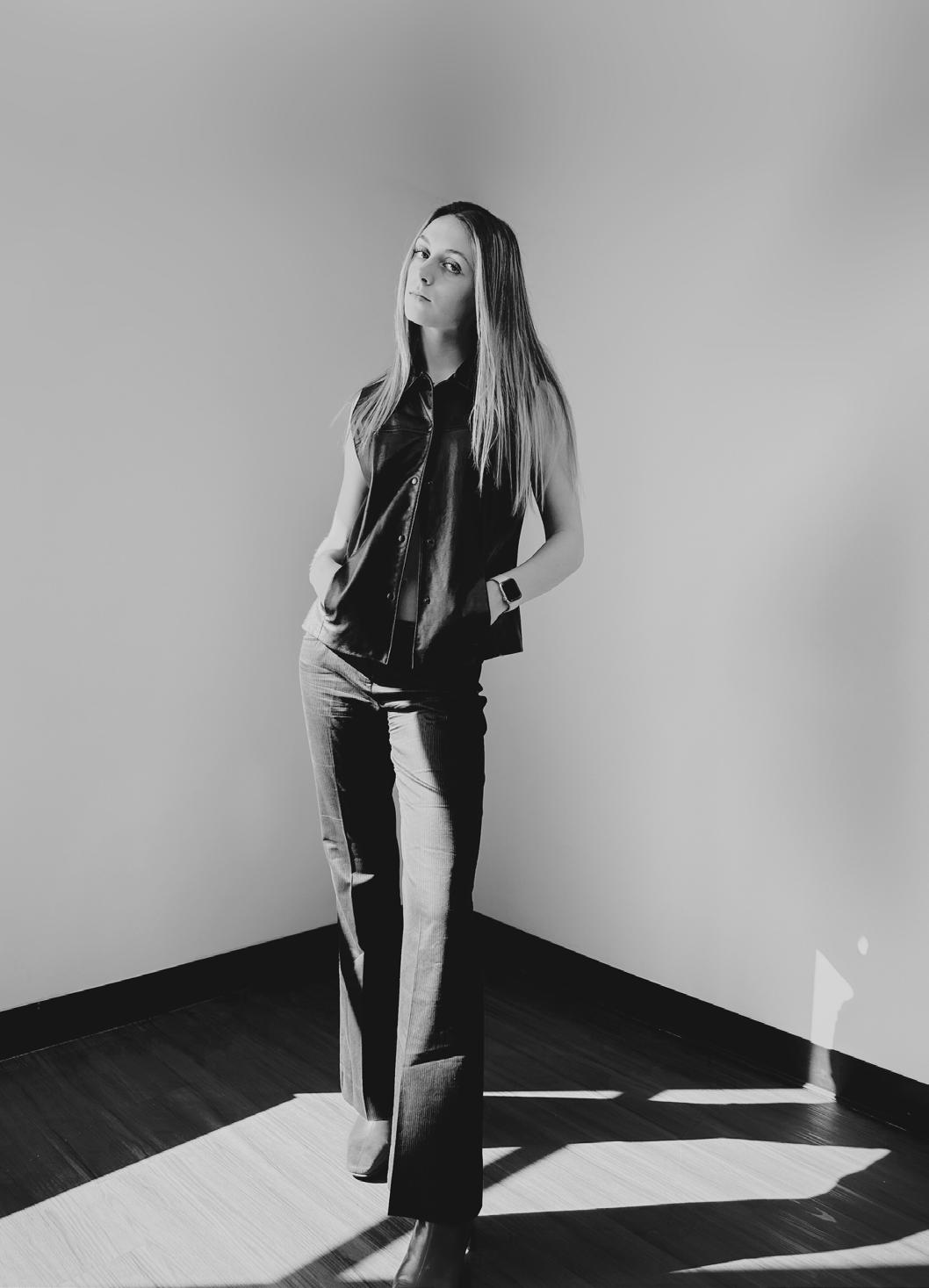

"I believe that our generation is constantly looking for inspiration and stimulation that social media can't fulfill alone."

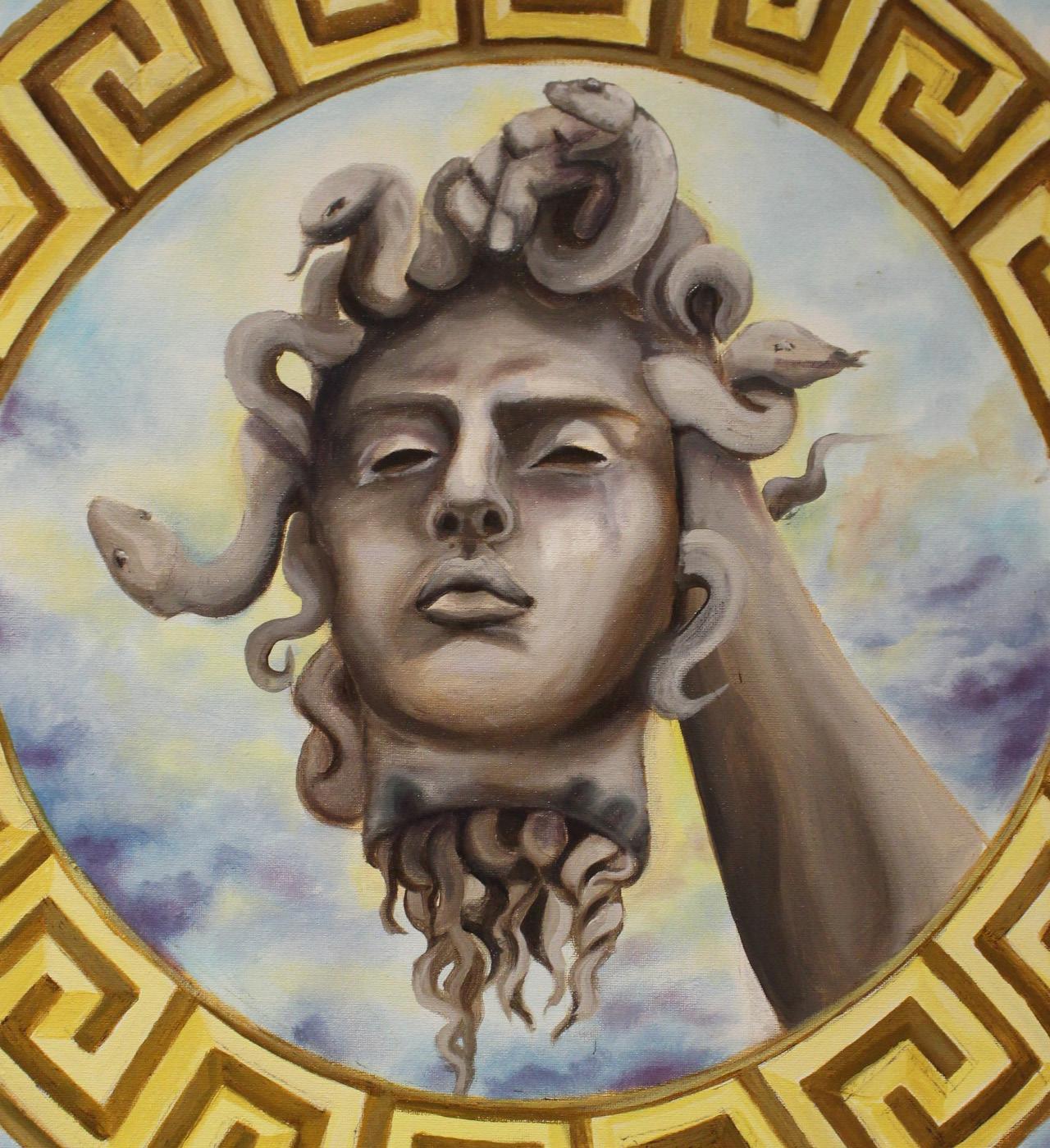
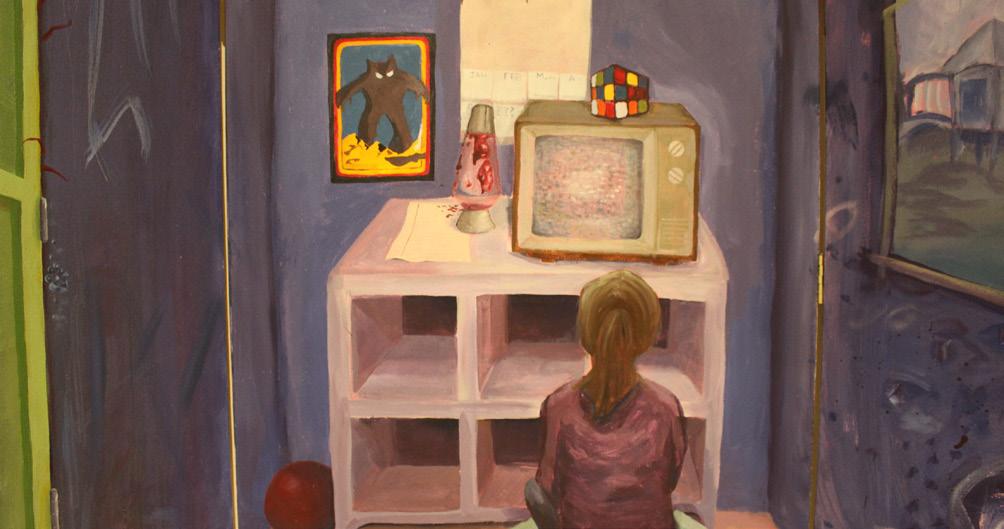
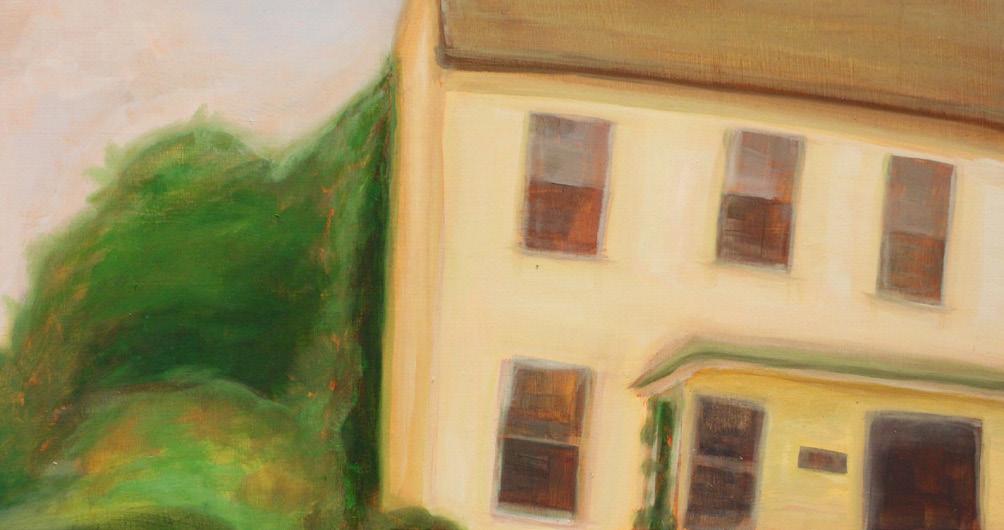
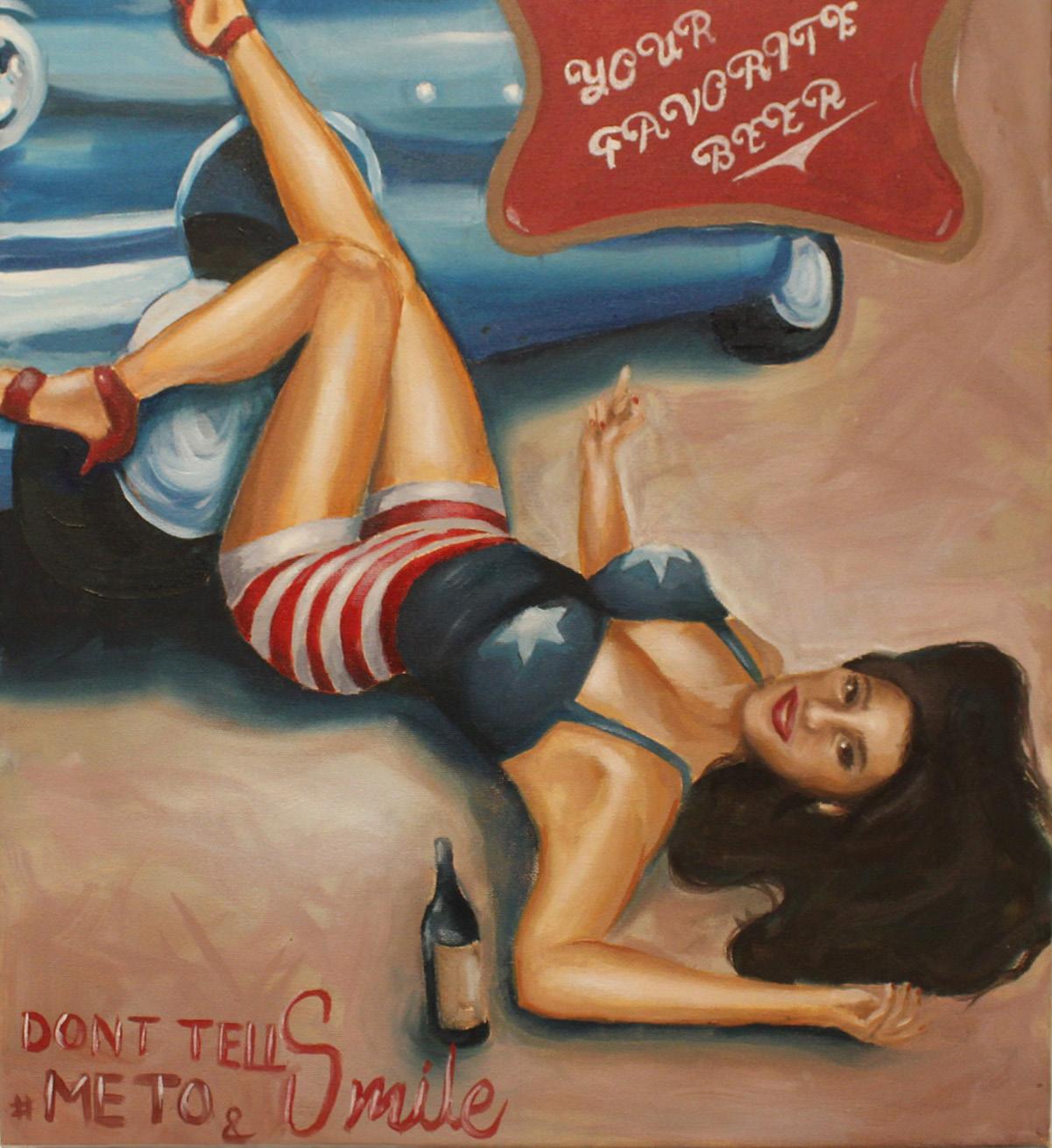
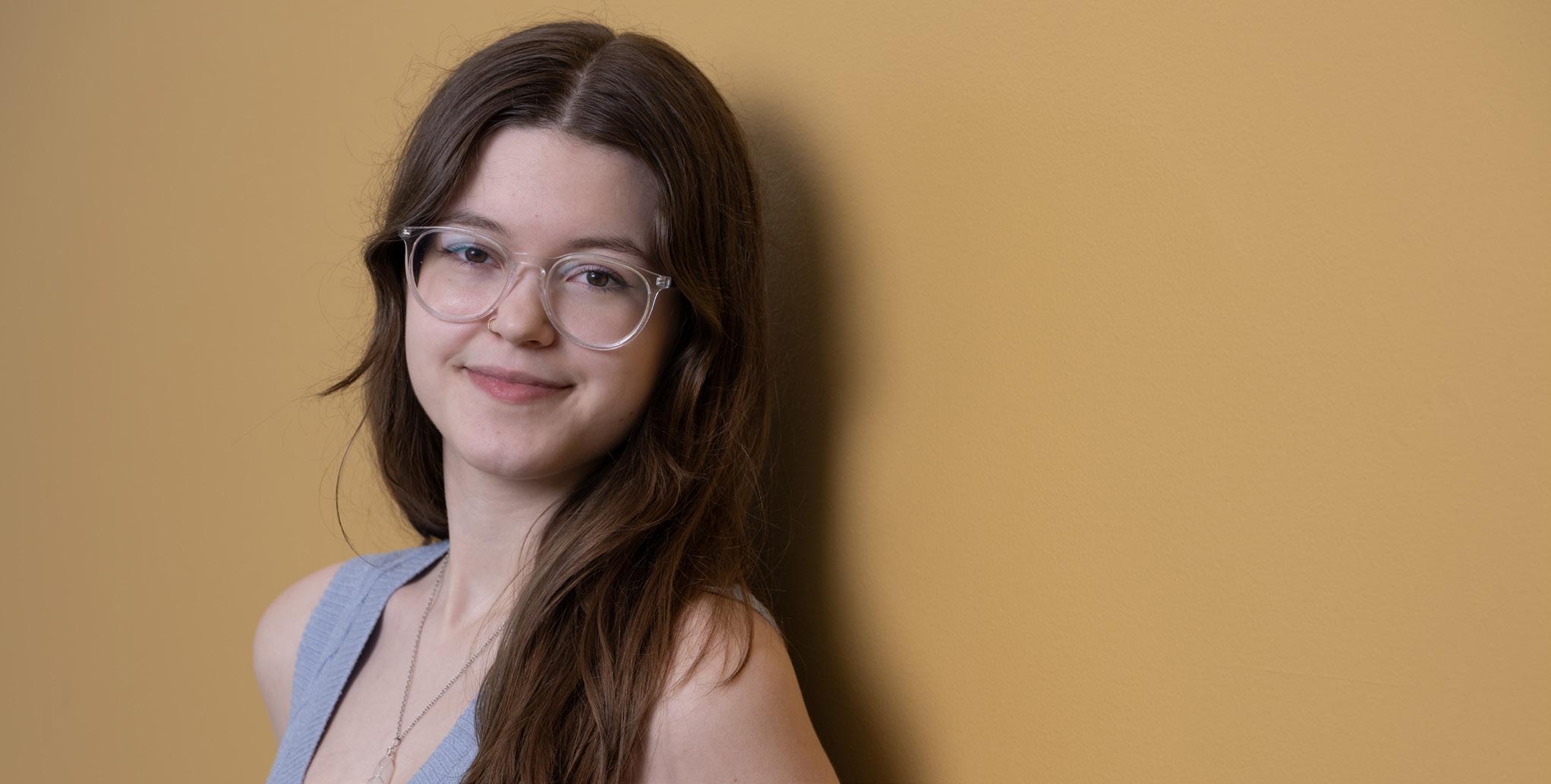
lyssa Zerbe was always passionate about art and psychology. “I had never considered that I could combine the two until I found art therapy. It just made complete sense for me that I didn’t have to pick between the two,” she says. Zerbe has already set herself up for success in her dream career path as an undergraduate as she will be graduating with a degree in art and psychology thanks to Albright College’s unique co-major offerings.
Zerbe’s artwork often revolves around her interdisciplinary interests. “I really enjoy painting things that have human figures. I like to incorporate a lot of psychology elements into my projects,” she says. Her most recent piece, completed over the course of her senior year at Albright, is focused on phobias.
The piece immerses viewers in the realm of psychological introspection, encouraging them to embrace their greatest fears; death, being watched, monsters in their closet. The multi-canvas installation creates the illusion of a bedroom. “The panels are on hinges and protrude from the wall, surrounding the viewer,” she says. “This project is especially unorthodox as it involves an irregular canvas shape on top.”
While Zerbe primarily works with acrylic and oil paint, she isn’t afraid to work with unexplored mediums, including graphite and charcoal. “Insignificant,” for example, was created using entirely charcoal and graphite. The large-scale, realistic piece depicts a small lady bug on top of a tremendous finger. The piece won an honorable mention at Albright’s 2023 student art exhibition in the Freedman Gallery, and Zerbe was able to also sell the piece, a moment in her art career she is particularly proud of.
While excelling as an artist and psychology student, Zerbe has been a Dean’s list student throughout her college career and has maintained a 3.9 GPA. She is also incredibly involved on campus. Zerbe served as the advertising chair of Psi Chi, the international honor society in psychology, during the 20222023 academic year and currently serves as the president. She is also a member of Sigma Kappa sorority where she was the vice president of communications and operations during 2022 and the vice president of standards and values from 2022 to 2023. Zerbe is also a student in Albright’s honors program and has been the program’s secretary since 2023.
by Dylan Sokolovich“My absolute favorite opportunity and project at Albright was working on mural projects for the TExpL [Total Experience Learning] program,” says Zerbe. “In the summer of 2023 I got to work with Mike Miller and contribute to multiple mural projects. I was involved in multiple phases of the project and even helped with the installation of a collection of posters with wheat paste at a local history center.”
In addition to working as a Total Experience Learning summer intern, Zerbe has balanced a range of on campus jobs. She has worked as an Academic Learning Center tutor since 2022 and became the tutor manager for the social sciences in 2023. She has also worked as a psychology statistics and research student lab assistant and supported the 13th Street Educational Partnership as a student tutor.
After graduating, Zerbe is going straight to Marywood University to earn her master’s degree in art therapy. She has also recently received an offer for an assistantship at the university. With her wealth of knowledge, experience, research and academic accolades, Zerbe is well-prepared to succeed at Marywood and beyond.
Photos Left to Right:
"What did you expect?" | Oil on Canvas
"Go Home" | Oil on Canvas
"Panic Room" | Acrylic on Canvas
"Your Favorite Beer" | Oil on Canvas
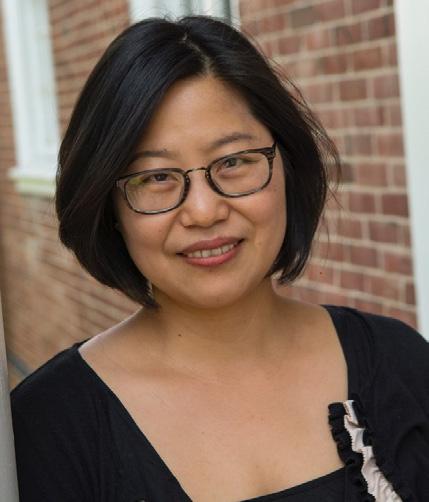
Within the endless world of fashion, creativity intertwines with craftsmanship, creating an identity that is a testament to the power of passion and perseverance. Professor MeeAe Oh-Ranck, an artist and educator, is shaped by her deep-rooted love for the arts and relentless pursuit of her passion throughout her vibrant career.
Professor MeeAe Oh-Ranck holds a Master of Science in Textile Design from Philadelphia University, where she specialized in digital print design. She obtained her BFA with a major in Fashion Design from Moore College of Art & Design in Philadelphia. With more than 20 years of experience, she has excelled as a creative and technical designer in the fashion industry, having worked both domestically in the US and internationally.
Professor Oh-Ranck began her journey as a designer, consistently honing her skills and vision through experiences with renowned companies such as Tommy Hilfiger and Oshkosh. Through her experience, her work garnered attention, earning features in magazines and other prominent platforms. In addition to these endeavors, Oh-Ranck explored her entrepreneurial side, establishing her own business as a creative director. During this venture, she assisted clients in branding and product development, providing her expertise in branding, pattern making, and design.
However, Oh-Ranck’s journey did not begin this way when she took an unexpected turn and ventured into teaching. An opportunity to teach at Jefferson University Sparked an interest and newfound passion for mentoring aspiring creative minds. She embraced and found fulfillment in teaching students how to unlock their personal creative potential. Thus, this transpired into her becoming a full-time professor and marked only the beginning of an enriching chapter in her career.
While reflecting on her decision to pursue a career in fashion, Oh-Ranck traces it all the way back to her younger years, filled with admiration for the arts, music, and theater. Despite her parents' expectations for a more traditional profession, she followed her heart’s calling, leading to self-discovery and artistic exploration.
Oh-Ranck was nurtured in an environment filled with creativity. It was only natural for her to connect with artistic pursuits. Her parents, however, had different aspirations for her. To support her academic journey in the United States, she pursued medical school to satisfy her parents' wishes. Despite their aspirations, she knew deep down that her true calling lay in design and fashion. Driven by her innate passion for creating, she decided to pursue studies in fashion design, leading her to Moore College of Art & Design. Moving onward, she did not look back. She instead immersed herself in the fashion world and embraced every opportunity to express her artistic vision.
Throughout her career, Oh-Ranck has had numerous accomplishments and moments of pride. One of her standout milestones that reflects her dedication and vision is the New York Fashion Week with Albright.
Taking the initiative to showcase her student’s work, Oh-Ranck played a pivotal role in elevating Albright's fashion design program, bringing it to a global stage. After nearly five years of revamping Albright’s fashion department, she efficiently showcased her fashion collection in the 2021 and 2022 New York Fashion Week as a creative director.
“After New York Fashion Week, the amount of encouragement that we received was just an amazing experience, and being able to showcase students' work is a huge accomplishment,” Oh-Ranck says. “I love to see how far my students have come and what they accomplished.”
As a professor, Oh-Ranck brings an original blend of passion, creativity, and industry experience into her classroom. Her teaching philosophy revolves around creating a safe and supportive environment where students are encouraged to embrace their strengths and explore their creativity freely. Rather than imposing rigid guidelines, Oh-Ranck nurtures each student’s individuality, guiding them toward realizing their full potential.
“I changed my teaching to help students’ strengths and push them in that direction because art cannot be articulated. Art is not one plus one equals two. Art is limitless,” Oh-Ranck explains. “There are so many different interpretations. Rather than keep them in compartments or conform them in a specific way, I want them to be free and then encourage their strength to develop their skill set.”
At the forefront of her teaching methodology is incorporating her own research findings into the curriculum. By presenting her work at conferences and weaving it into course content, she offers students a firsthand glimpse into the dynamic intersection of fashion, history, social science, and scientific inquiry. This approach equips students with practical skills while fostering a deeper understanding of how their studies are interconnected with broader societal contexts.
Furthermore, Professor Oh-Ranck emphasizes cultivating a global perspective among her students. Recognizing the value of exposure to diverse cultures and perspectives, she actively develops opportunities for study abroad programs and overseas experiences. By immersing students in global communities, she encourages them to broaden their horizons and gain a deeper appreciation for the interconnectedness of the world. Through her dedication and visionary approach to education, Oh-Ranck's teaching philosophy goes beyond the confines of textbook learning, instilling in her students a passion for exploration, innovation, and global citizenship.
To aspiring artists and students venturing into the fashion world, Oh-Ranck offers a word of encouragement: perseverance. Despite the challenges and uncertainties that may arise, she emphasizes the importance of staying true to one's passion and never giving up on their dreams. She emphasizes the significance of never losing sight of your creative vision and staying dedicated to anything you put your mind to.
Oh-Ranck’s journey as an artist-educator serves as an inspiring testament to the transformative power of passion and creativity. Through their unwavering dedication and commitment to nurturing the next generation of fashion innovators, she continues to leave an indelible mark on Albright and the world of fashion.
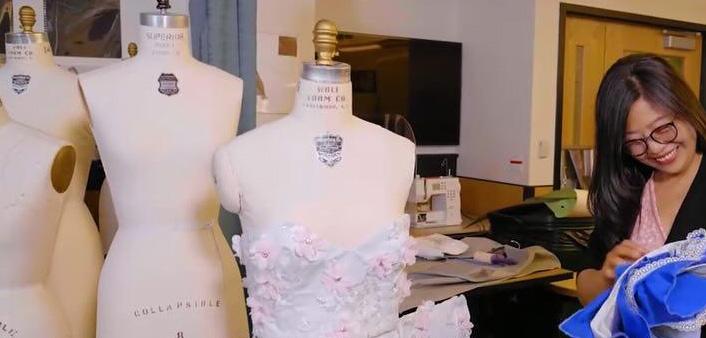

esus Orellana ’24, is no stranger to Roessner Hall as a Business Administration: International Business major. However, many might be surprised to see him in Masters Hall pursuing his other passion, creative writing.
“I’ve always been writing, I’ve been writing since middle school, so when I saw that the creative writing minor was available, I jumped at the opportunity to have it,” says Orellana. “It doesn’t necessarily align with my international business degree, but that’s kind of like a job where writing is more of my passion.”
Still, Orellana has made significant strides as a writer. In January of 2023, he published “The Lonely Madness” under the pen name J. Lunar. “The Lonely Madness” is a collection of nine short stories that Orellana says “deal with the madness that comes with the feeling of loneliness, as well as the stories that are directly born inside of those feelings.
“I was in a theater class and one of our assignments was to create a one-page short story, and I created this story around the idea of a dad who has lost daughter and starts hearing sounds of her,” says Orellana. “It didn’t even have a title because I couldn’t fit it on the page but from there it became a longer short story and the first that I would eventually create into a collection of short stories I managed to publish on Amazon.”
“A Name Long Dead” opens “The Lonely Madness” and ends with a simple yet heart-wrenching line of dialogue, “‘Daddy!’” that prepares the reader for what is yet to come.
Orellana says that Albright College’s creative writing minor has not only helped him improve as a writer but has also led to inspiring many of his stories. His work often encompasses fantasy, romance and science fiction, three genres he often interweaves to tell one cohesive story.
For his senior capstone project to complete his creative writing minor, Orellana is working on a vampire hunting story that he also hopes to eventually publish. “I wrote that as a short story for a class a semester or two ago, and it spiraled into a novella and then a whole world that I’m just beginning to scratch the surface on,” says Orellana.
Orellana is currently looking at jobs that align with his major in international business, but says he would love to incorporate creative writing into a career.
“Truth be told, if there were a creative writing major right here at Albright, I most likely would’ve taken that. The reason
I did pursue international business was due to the fact that I got a scholarship for that, and college is expensive, so that was amazing,” Orellana explains. “And that’s another reason why as soon as the minor appeared I jumped to make it mine.”
“For my future, creative writing is either going to continue to be a passion project, or hopefully I could actually become a proper author and actually have proper books published.” With his dedication, Orellana is well on his way to reaching this goal.

“Of course, that is what it’s about. Freedom. That’s the only possession that the artist has–freedom to do whatever he can imagine.”

rt, like all things else in the world, is ever-changing. Artists must change alongside it, embracing the exploration, experimentation and investigations that are essential to the creative process. They traverse recent technologies, methodologies, perspectives and concepts to provide a one-of-a-kind viewpoint to a given moment in history.
In “Parallels and Rupture,” Albright College professor of art and digital media and guest curator Matthew Garrison presents the work of numerous artists, work that often breaks from expectations of their artistic practice and is therefore less likely to be exhibited. Although each of these pieces breaks away from what is traditionally expected from the artist, Garrison has carefully crafted parallels between the work of each artist to achieve a cohesive exhibition.
“We’re in this incredible moment right now where people are reassessing art history and looking back at the linear notion of art history and saying, ‘Where is everybody? Where is the multicultural, international perspective? And where are the women?’” said Garrison
during a curatorial lecture in the fall 2023 semester. “I was looking at my art history book, the Janson Art History book, which many people would’ve had back in the day. No Diego Rivera, no Romare Bearden, no Frida Kahlo. It’s like really essential artists were just not even there. This is that reassessment of art history with people like Danny Simmons, Willie Cole, Marilyn Minter, Sarah Jiminez, Anna Parisi and Maria Atkins.”
Garrison explains that “Parallels and Rupture” was inspired by the work of Philip Guston, one of the most influential artists of abstract expressionism. Guston’s early work was figurative and representational, reminiscent of what many imagine when considering abstract art. However, in October of 1970, Guston unveiled 33 new paintings at the Marlborough Gallery in New York that would completely alter how he was recognized. Rather than being greeted by Guston’s expressionist brush strokes and fields of color, followers, critics, and buyers were met with crude images. Displayed were crude renderings of everyday items–shoes, lightbulbs, clocks, books– and recurrintg Ku Klux Klan imagery.
The response to Guston’s work was resoundingly negative, yet these
"Parallels and Rupture" was showcased in the Freedman Gallery from August 29-December 08, 2023 –Artist Philip Guston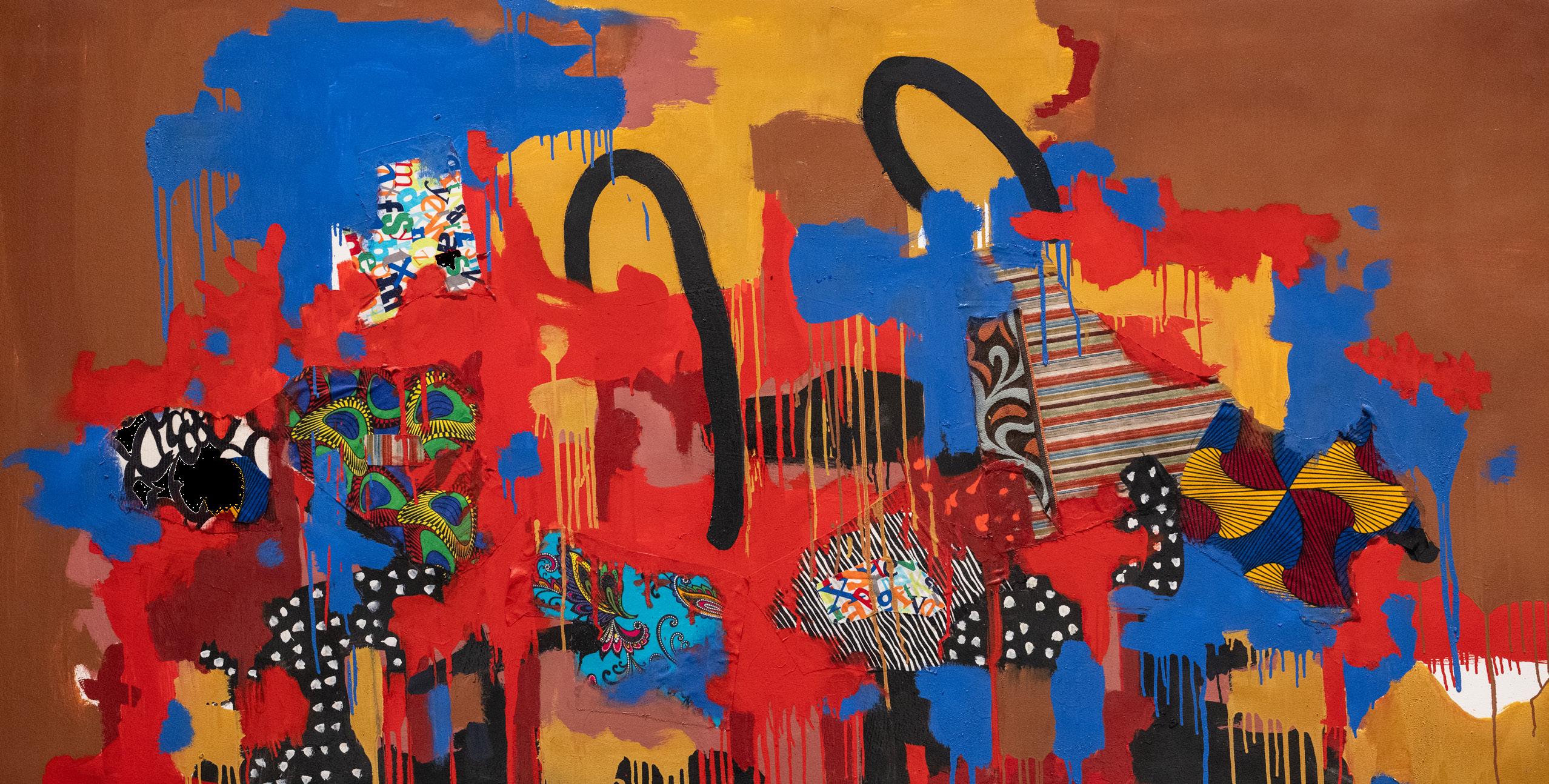
"Homeward
cartoonish renderings of images and objects would lead a transitional movement from abstract expressionism to neo-expressionism. By presenting the uncommon work of known artists, “Parallels and Rupture” mirrors Guston’s Marlborough Gallery showing. No longer confined to what they’re known for, these artists are granted the freedom to explore the creative process and break free from expectations.
Bearden, who Garrison says reinvented his work while coming of age alongside modernism, didn’t make his first series of collages until 1964 at the age of 53. In 1963, Bearden would host several black artists at his New York City studio to discuss how they could support the forthcoming March on Washington. He suggested that they partake in collage as a collaborative artmaking process, but the artist collective never came to fruition. Still, Bearden’s talent with the medium flourished and it became what he is best known for.
Much of Bearden’s collage work focuses on the Black experience, both past and present, and uses a fascinating range of colors, textures and images clipped from a variety of sources. “The Train” most clearly references Bearden’s relocation from the south to the north, but also evokes larger issues of segregation and migration. “Pilate,” also featured in “Parallels and Rupture,” is inspired by a character in Toni Morrison’s novel “Song of Solomon.” In many ways, this piece serves as a reminder that Bearden never left the South, a figurative feeling that holds true for many Black Americans. The piece is dominated by warm colors and lyrical rhythm, bringing an unimaginable sense of ferocity to what would have otherwise been considered a mundane image.
Garrison’s “Parallels and Rupture” also recalls work by other Black artists that art history books would typically exclude. The parallels to Bearden’s work are undeniable, a fact that brings such different forms of art and mediums together cohesively but also
serves as a reminder that any significant progress has yet to be made.
Mahler Ryder’s ink drawing “The Great American Subway” recalls The Great Migration and the Underground Railroad with a group of figures in a crowded railcar. The piece's use of negative space feels almost uncomfortable, and the figure in the foreground seems to raise a close fist that is symbolically reminiscent of the black power movement. Similarly, Turiya Adkins’ painting, “This Journey Momma,” recalls The Great Migration with several Black men in track and field racing above a painted horizon. Each figure is at a different point in the race, some exhausted and others just beginning, but there is no finish line in sight, symbolic of Black Americans being forgotten.
Other Black artists featured in “Parallels and Rupture,” such as Danny Simmons and Willie Cole, find inspiration in African culture and heritage. “Simmons is an extraordinary painter of multimedia, and you can see he combines these fabrics, both contemporary fabrics with African fabrics, and you can see how they come together in this kind of wonderful kaleidoscope cultural collision,” said Garrison. Simmons, whose work was on loan from Westwood Gallery in New York City, creates with a beautiful combination of primary colors and
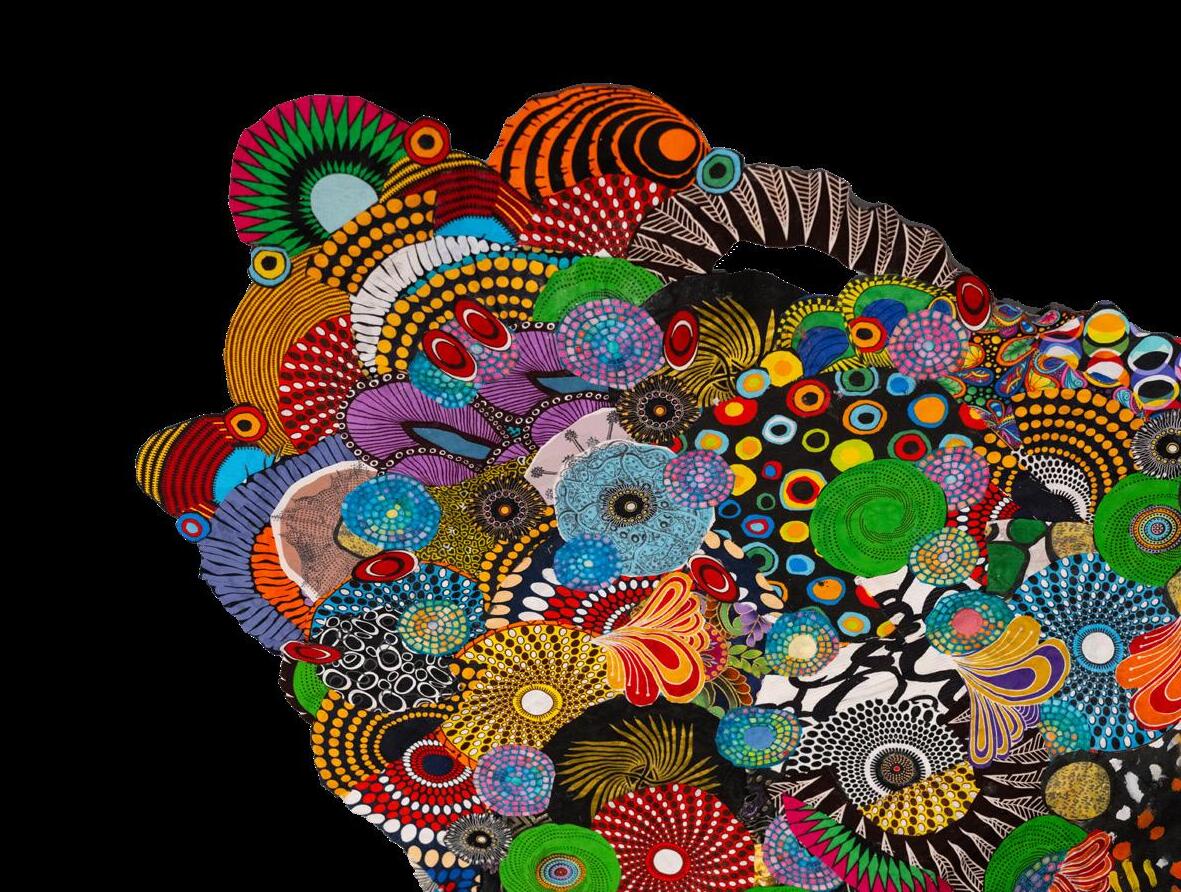

textures derived from these patterns, and with the trailing fabric of “Take the Long Way Home” and “Homeward Bound,” any viewer entering the Freedman Gallery is instantly drawn to his work.
Cole’s featured work, “Domestic Shield XV,” “Shoonufu Female Figure,” “Kitty” and “The Smile That Bites” are all inspired by notable African forms or imagery. “Shoonufu Female Figure” is a bronze sculpture cast from highheeled shoes that is reminiscent of the art of the Senufo people in Africa. “Kitty” and “The Smile that Bites” similarly find their figural form in Cole’s use of high-heeled shoes. “Domestic Shield XV” is from a series that includes similarly scorched ironing boards that have been patterned with a hot iron. Like the work of Simmons and many other artists of “Parallels and Rupture,” Cole draws from what he knows to disrupt and recraft historical narratives.
With “Parallels and Rupture,” Garrison also draws upon underrepresented women artists who have challenged societal and aesthetic expectations, and for this, have been excluded from history.
With her early studies at the Parsons School of Design, Judith Shea is a significant sculptural force and was one of the first artists to explore clothing as sculpture. “Snow Coat” and the accompanying images are absent of the female figure, yet it is the female figure and the ideas of feminism that became so central to her work. Shea often countered the aesthetics that were central to minimalism in the 1970s and onward, a style often dominated by men, and became a pioneer of her design.
With the conceptual video “Smash,” Marilyn Minter also challenges societal and aesthetic expectations considered by pop artists of the 1960s. In the video, the feet of a woman wearing high heels are shown stomping, splashing and dancing in a downpour of silver liquid. “She deals with sensuality in a way that is very visceral, and I’m not sure how attractive it is. Maybe it is, maybe it isn’t. And I think that’s the power of it,” says Garrison. “Here inside the room, she’s addressing the idea that women are breaking through finally. And she literally has this woman in high heels shattering class, so it's quite spectacular.”
The interdisciplinary work of Afro-Brazilian artist Anna Parisi addresses those who are marginalized, especially women, with work discussing healing and transformation. “Hail Potamotrygon Leopoldi” is a beautiful collage that features the initiation of a woman into Candomblé, a religion that came to Brazil on slave ships from West Africa, and the Potamotrygon Leopoldi, a venomous stingray that can only be found in the Amazon basin.
“I see it as this loop between nature and humanity,” says Garrison. “And also, in Brazil there’s Candomblé, it is a religion of the people where they connect to sort of the natural environment. And the priests, for example, have these dots on them, and the stingray has these dots. So, you see again that circuit between the nature and the people and the culture of Brazil.”
“Parisi is also willing to take on really tough topics,” says Garrison. “So, she interviewed people who were raped, and she explains that the whole thing with the opacity of the paper and the distance between the truth and the pain and the words and the figure is meant to convey the distancing people take when engaging with the subject of rape and trans issues. They see it, but they just can’t truly empathize.” Garrison is referencing “Look at Me,” a piece from Parisi’s aptly named “Oppression Collage” series. Part of the interview is included in the piece powerfully: “my experience/strangely/ became/defined by/the genitalia/which/person/I am supposed to/see or talk to/who/I am allowed to/have sex?”
Margaret Meehan explores a variety of activist themes, including past and present feminist campaigns. Hung high above the Freedman Gallery is “Deeds Not Words,” a pink vintage military parachute with the same phrase embroidered on it. It is suspended from a branch, caught in a never-ending descent. The quote, which was coined by the Women’s Social and Political Union, demands the woman’s right to vote, but in Meehan’s context, seems to suggest that for women, any true progress has yet to be made.
Photo Courtesy of John Pankratz
Garrison suggests that another theme arose during his curatorial process, the idea of societal rupture. He alludes to the idea that there are moments in history that are so disruptive or transformative that the way that artists make or think about their work has completely changed. These unanticipated events impact society in tremendous ways, but “Parallels and Rupture” displays the consistent thread between how artists find their own, unconventional ways to frontline these issues.
In Alex Golden’s digital series, “American Dream” his portraits depict prominent Americans who embodied the American Dream but whose lives were tragically cut short by AIDS. The subjects in “Parallels and Rupture” include Alvin Ailey, one of the most accomplished dancers and
choreographers of his generation, and Robert Reed, an actor best known for his role as Mike Brady on “The Brady Bunch.” They are suspended in permanence as their younger selves, symbolic of lives and dreams that were never fulfilled.
Numerous pieces in “Parallels and Rupture” also address the 9/11 terrorist attack on the World Trade Center. In “New York, New York,” Hong Kong-born artist Tseng Kwong Chi is seen standing in front of the Twin Towers in his signature Mao suit and dark sunglasses. In 1979, the photograph had a meaning all its own, but in the context following the terrorist attack, it seems to suggest more about the permanence of imagery.
Shea’s “White Towers” and Susan Crile’s “Ashen” both capture emotional ties to New York and the feelings of the artists after the disaster. They are stagnant images, yet they display a great amount of movement, bringing to life their experiences with an irreversible decision.
Jennifer Markowitz’s “My Ballot, My America,” “January 25, 2021” and “Stimulus Mask” all capture a fleeting moment that once felt so permanent. The embroidered pieces serve as a reminder of the COVID-19 Pandemic and reflect a shared experience that many would rather forget but will forever remain a part of our history. “Radical Self Care for the Age of Anxiety” by artist collective Jeju Island similarly addresses the COVID-19 Pandemic. The large-scale photograph brings humor to a serious moment, but like the Dada artists before them, Jeju Island can capture an otherwise unspeakable feeling.
In the grand culmination of "Parallels and Rupture," the viewer is confronted with a profound realization: art is not a static entity, but a dynamic force that mirrors the ever-evolving landscapes of society and individual expression. Inspired by Philip Guston's bold departure from convention, curator Garrison orchestrates a symphony of artistic rebellion, weaving together narratives of rupture and resilience.
Through the diverse array of works displayed Garrison invites the viewer to witness the transformative power of creative freedom. From the poignant collages of Romare Bearden to the visceral provocations of Marilyn Minter, each artist transcends boundaries, challenging the norms that confine them. In their defiance, they not only reshape artistic paradigms but also confront societal injustices and historical erasures.
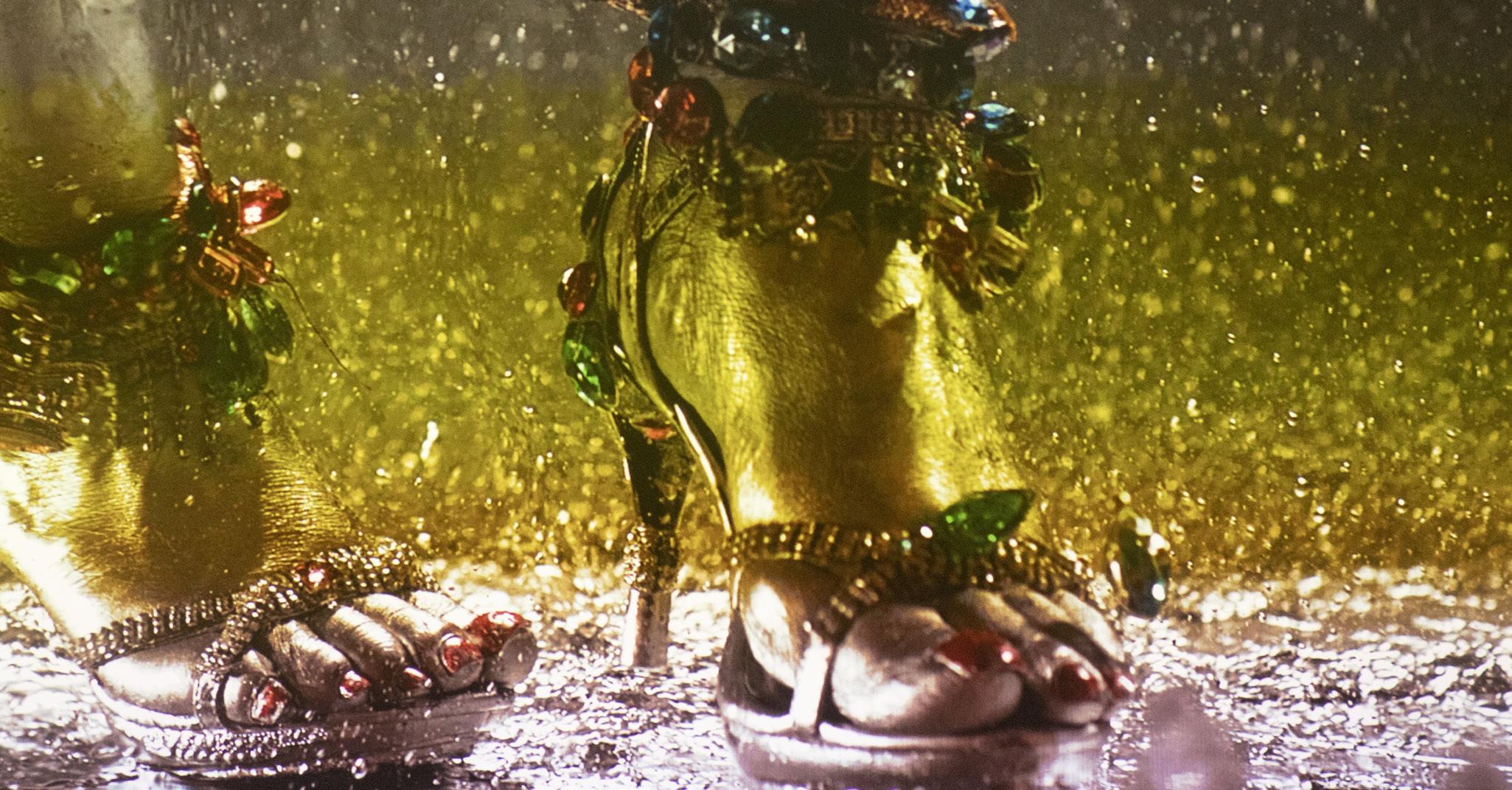 Photo Courtesy of John Pankratz
"Deeds Not Words" by Margaret Meehan
Photo Courtesy of John Pankratz
"Deeds Not Words" by Margaret Meehan
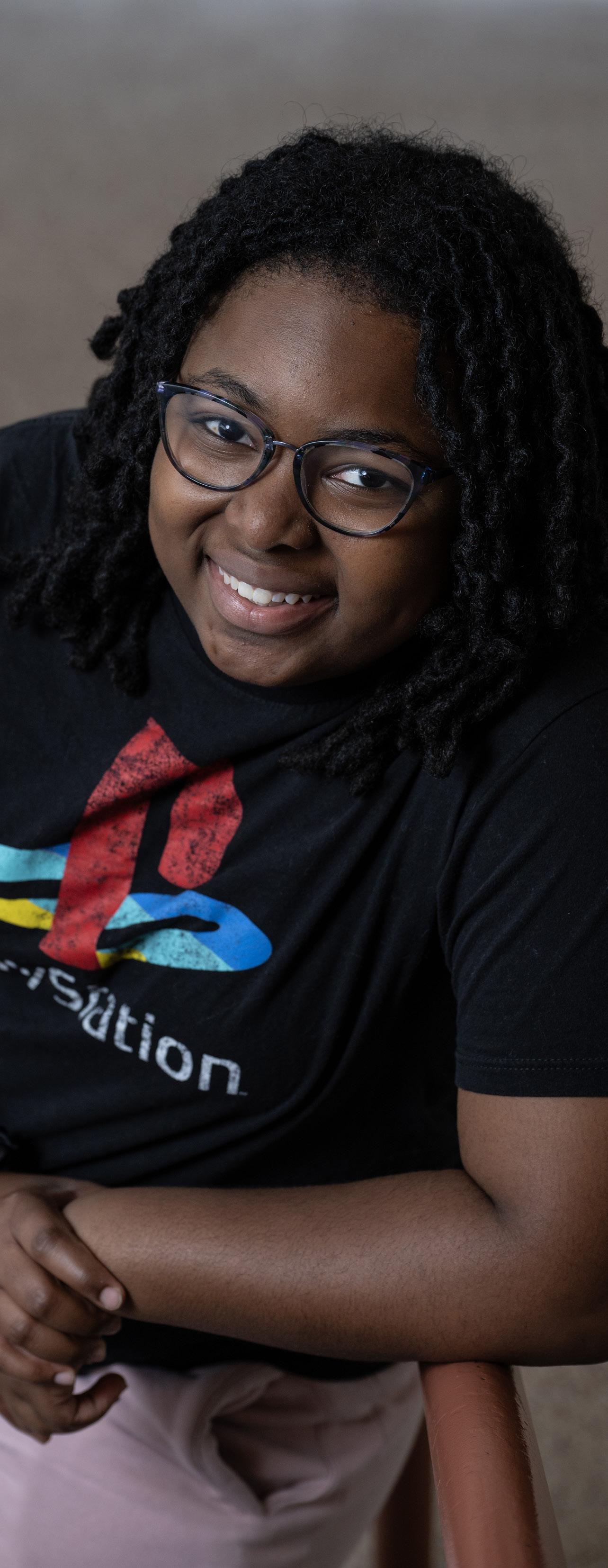
ycara Jones is a current senior majoring in Theater and Arts Administration at Albright College. In spring of 2023 however, she received some career changing news. The theater department had selected her for the position of stage manager for the production “The Revolutionists” by Lauren Gunderson. She would be working alongside theater professor and director Matt Fotis.
Alongside her, Jones’ stage crew consisted of: Amara Fabry, Brooke Gibson, Hannah Martin, Julia Poole, Elizabeth Churchill, Liam Sibbers, Emily McCormick and Bailey Erskine.
“I was stunned, I didn’t think it was real,” says Jones. While she did express some trepidation coming into the role, she was not new to the backstage world of theater.
In the past, she has worked as the sound board operator for the musical “Spring Awakening” and as wardrobe assistant for the shows “Orlando” and “As You Like It.”
Her biggest challenge in this new role, however, was the work life balance and learning how to take constructive criticism regarding her paperwork. She said she has grown a lot because of working on this show and has learned most of all the value of communication.
Jones expressed that everyone she worked with showed so much compassion and empathy that she never felt as though she could not express herself and her thoughts. She also expressed that working alongside Fotis taught her a lot about responsibility because he consistently gave her the space to demonstrate her own leadership skills.
As for what the show “The Revolutionists” meant for her, she shared her own feelings about the current state of the world in connection to the production. Currently, Jones feels as if the world is being defined by divisions established by a higher force of power. A piece like “The Revolutionists,” however, confronts this conflict with the government using comedic elements and the overall point of making sure to stand up for what one believes is morally right.
Jones says future stage managers should ever hesitate to go for opportunities. You never know what will come from it. She will be working front of house in the show “Urinetown,” which will be her final main stage production here at Albright. After graduation, she will be working at the Pennsylvania Shakespeare Festival as a box office intern.
Photo Courtesy of John Pankratzanielle (Dani) Kline is a current Stitcher and On Set Dresser for the company Sight and Sound’s film department. She graduated last semester from Albright College with a major in Fashion Design with a concentration in Costume Design, as well as a minor in Theater.
During her time at Albright, she was a proud member of Albright’s theatre troupe the Domino Players as well as a member of Agon, the literary and arts magazine on campus. She primarily worked as a Costume Technician for Albright’s main stage shows: “Iphigenia and Other Daughters,” “Orlando” and “As You Like It” before graduating.
While she loved working for the theater program, her heart has always been in film. She says that she has been fascinated with TV and movies since she was younger. She didn’t consider her role within television and film though until high school when her art professor suggested she study costume design so she could combine her interests.
What makes her story even more impressive is that, before attending Albright, she only had basic hand sewing skills. She did not start seriously sewing until her freshmen year.
Dani finds that her experience in theater was a major jumping off point into her current position now at Sight and Sound. According to her, many costume designers get their start in theater as it helps to strengthen foundational skills of designing garments. TV and film adds an extra challenge however as clothes are seen closer by an audience while costumes for theater are usually only seen at a distance. Dani’s past experiences through the Albright theater program helped her get to a point where she felt confident in the work she was creating.
Now post-graduation, Dani has started her position at the company Sight and Sound working on their second ever film. While Sight and Sound is probably better known for their theatrical adaptations of biblical stories, Dani explained that the film department has a different focus. Sight and Sound wants to create films that highlight historical figures who have used their lives to spread the word of God through their work. This message is something that means a lot to Dani as she herself is Christian.
She wants any other costume design majors at Albright to find the confidence to jump at opportunities. “Take any experience that is offered to you that could lead you somewhere that you want to go. Even if not everything about the experience is good, it will get you farther and get you somewhere where you want to be.” She also emphasized the importance of building connections as much as possible.
Photo Courtesy of John Pankratz
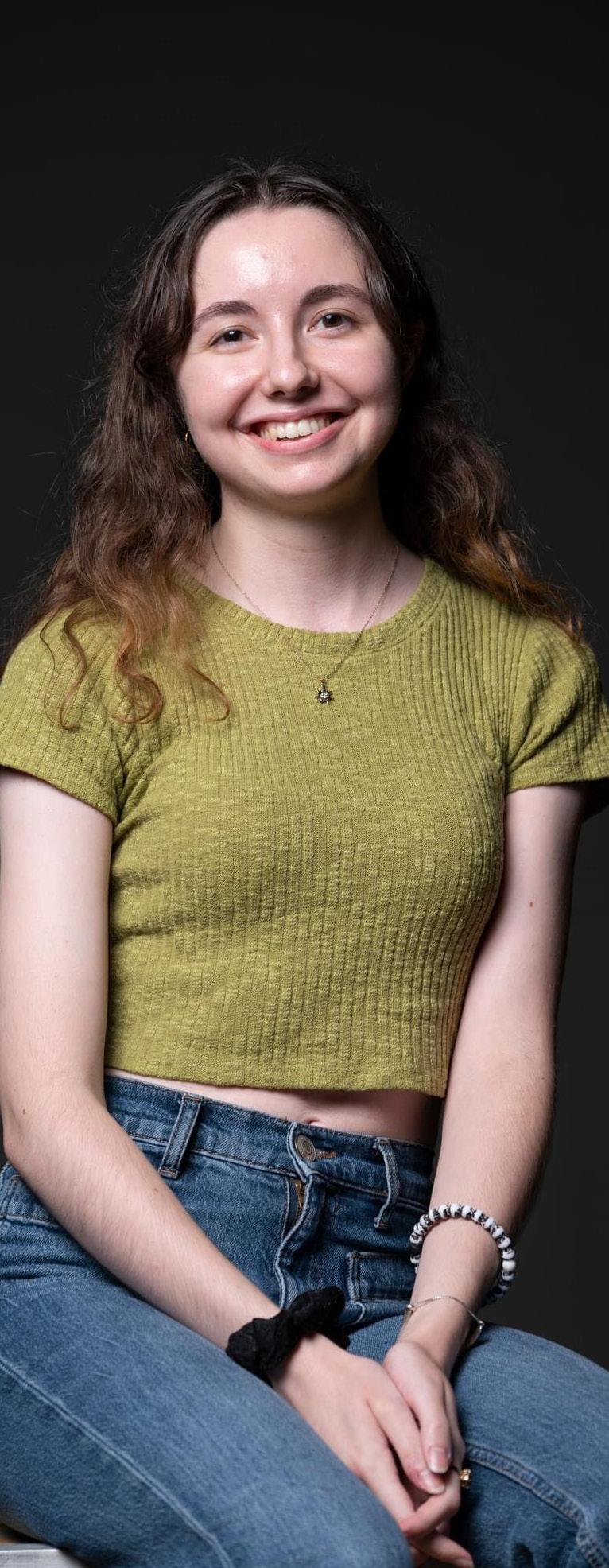
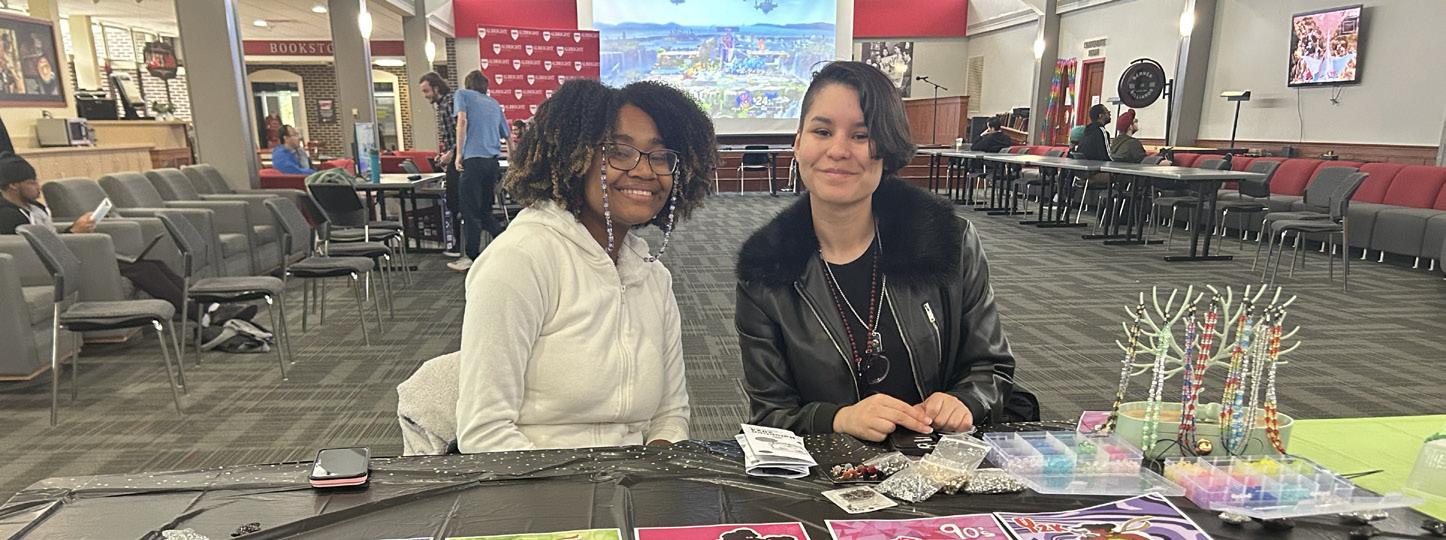


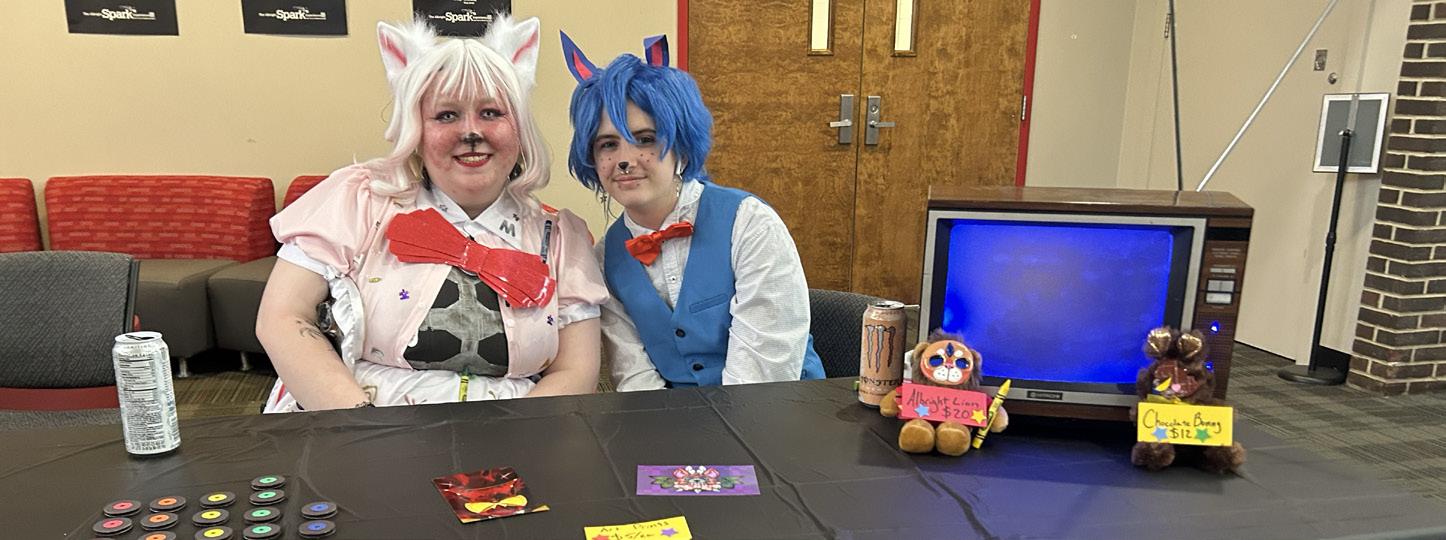
Aaliyah Rojas is a soon-to-be graduating senior majoring in Theater with a minor in Political Science. Rojas has just recently started their business last semester in September. She’s known around Albright for wearing extravagant glasses chains and decided that she wanted to start making them herself. Her business debut was at this school year’s RaionCon where she sold her product under the name Pisces Beads. Outside of creating glasses chains, she holds two e-board positions for two organizations. She is the current treasurer and financial chair of both Albright’s theater company, The Domino Players and Agon: Albright’s Literary and Arts Magazine.
Bella Boehm is a current junior at Albright majoring in Costume Design. Her small business focuses primarily on creating snaptags, which are customizable accessories that students can attach to items such as backpacks and keychains. She has been making snaptags for 10 years and started creating them alongside her family members. Now, Boehm finds herself creating them specifically for the purpose of fundraising. She has been selling them both here at Albright and back home in Pittsburgh at her old elementary school. She loves making snaptags because she finds that it connects her back to her family and her roots. In addition to her business, she is also involved with Club Vogue and the sorority Phi Mu.
Althea Welsch, better known as Critter Creations to their customers, is a senior majoring in History with a Holocaust studies minor. She currently is focused on creating primarily digital art products and commissions. They opened their business in 2021 and primarily uses the art application Procreate to make their work. Currently you can find her pieces on Instagram, Tumblr and her personal website. In the future they are hoping to sell their artwork in West Reading during festivals such as Reading’s coveted FallFest. Welsch is also involved with the history honors society, Phi Alpha Theta and Albright’s Gamers Guild.
Simon Fulmer is a Digital Studio Art major and a current junior. He is known to his online fanbase as Radio or Radio.Whizz. They sell a multitude of products ranging from art dolls, ink prints, digital art commissions and magnets. They have been selling their work since 2020 and started out focusing only on selling their digital art commissions. However, Fulmer has used his range of skillsets to branch out into other facets of artwork. In the future, he would love to collaborate with other artists. In addition to being a budding artist, they also hold an eBoard position for Gamers Guild as their historian.

In a series of black and white photographs, Digital Communications senior Alicia Cone draws upon those that adorn the albums of indie band “Cigarettes After Sex” from photographers she cites as inspirations, such as Kate Bellm. A buzzard is seen in a dilapidated barn window, an open expanse of field is overwhelmed by the empty sky and a faceless woman grasps a gold necklace around her neck. They are diverse, but somehow still feel deeply personal, evoking feelings of loneliness and longing.
Cone joined Albright College in 2022 after discovering the Digital Communications major. “I have a lot of passions for different subjects. I love photography, I love to write, I also love to design,” she said. “It was hard for me to find a major that supported all of my interests, so when I found out that Albright offered Digital Communications and that covered a lot of what I was interested in, immediately that became the best option for me.”
In her major, Cone has completed a varied range of courses including digital video, writing for mass media, mass communication & society and illustration & design. Yet, her studies have remained firmly grounded in photography.
“Photography is probably the thing I’m most passionate about and best at,” said Cone. “It has always come naturally to me and I feel like I view the world around me through a camera lens so to me it just comes intuitively.”
In 2023, Cone joined the Arts Magazine as Vice President where she writes, takes photographs, collaborates on social media posts and creates layout designs. “Since I love to write, design and take photographs I thought I’d be a great asset to AM’s team. I really found it important to put my own work out there and use my creative abilities to help other people and promote more student involvement in campus life.”
After graduating, Cone plans on continuing to pursue her passions of graphic design and photography, potentially even creating her own shop where she plans on selling commissioned work. “AM has strengthened my design skills and just helped me become more social which is something I need because I’m very introverted. So, AM really helped me connect with others and know what it’s like to work with a team.”
“If you’re thinking about joining a club, just do it. If you have a creative outlet, find a way to use it, whether it’s through a student organization or just finding ways to put out your work. I think that’s really important,” said Cone. “Getting involved is a good stepping stone for the future and it’s a learning experience. Don’t be afraid if you don’t think you’re good enough or not qualified, it doesn’t hurt at all to try. I know AM and Albright in general is always trying to help other people and they’re very accepting so they’re always going to help you learn along the way.”
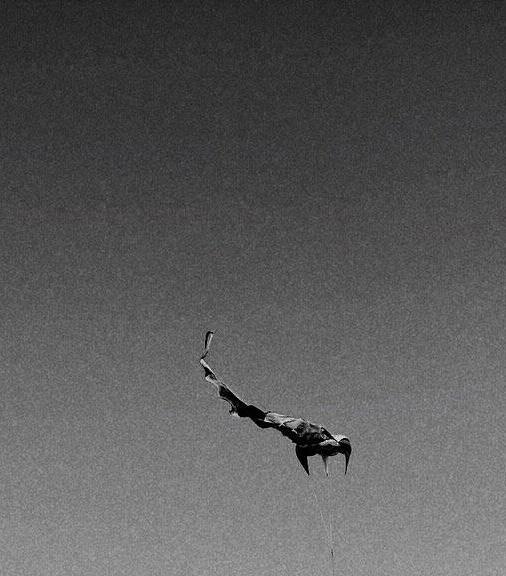
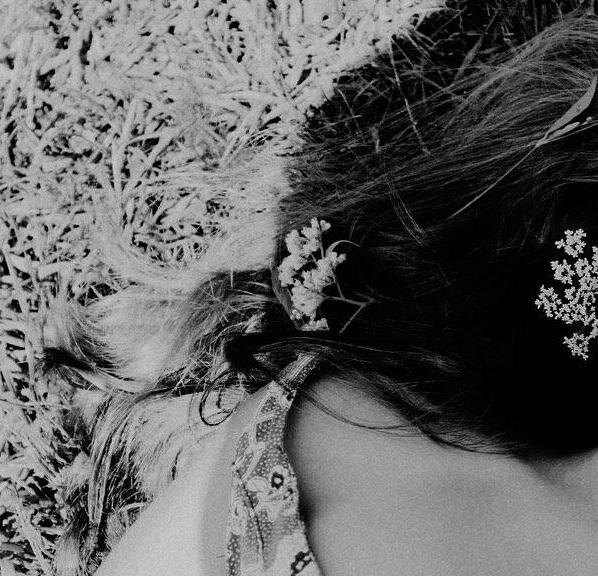 by Dylan Sokolovich
by Dylan Sokolovich
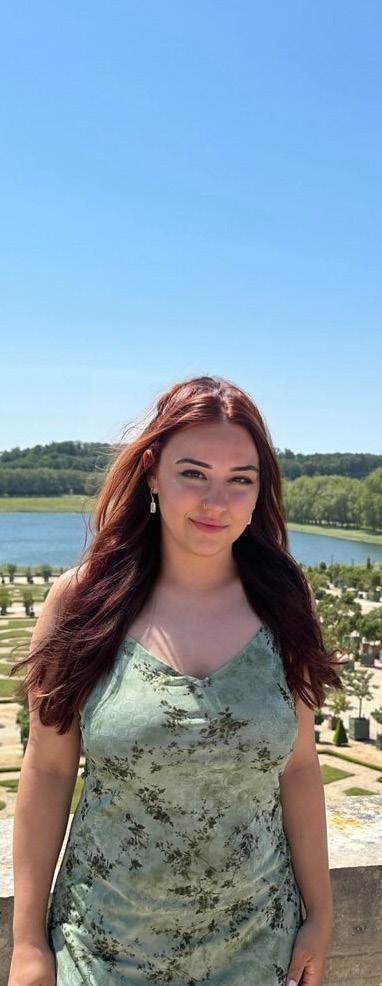

Concept art refers to visual representations or sketches created during the initial stages of the development of a project, such as a film, video game, or animation. These artworks are designed to communicate the overall aesthetic, mood, and key elements of the project to the creative team and stakeholders. Concept art can include character designs, environment sketches, storyboards, and mood boards, among other visual materials
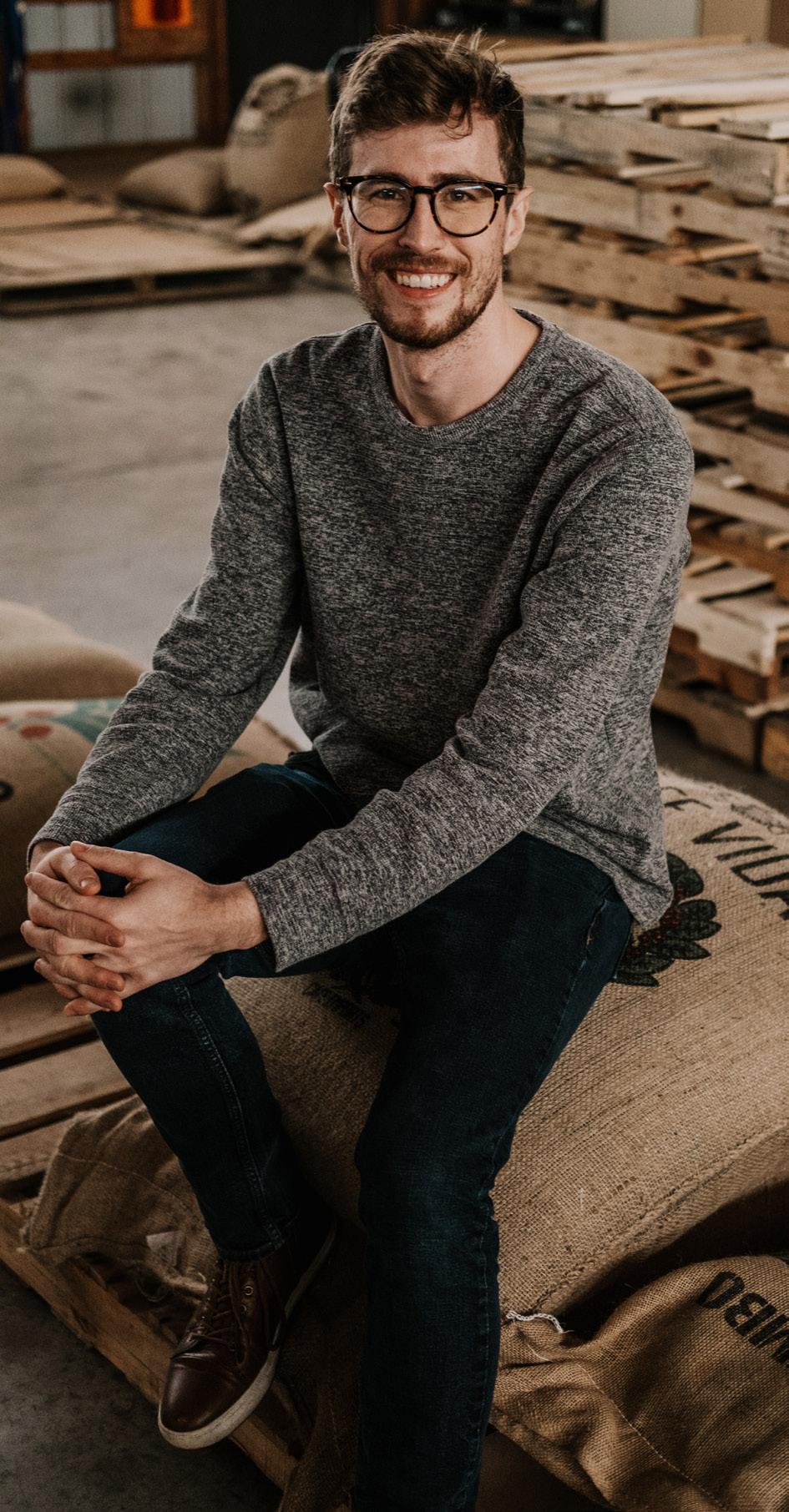
n the expanse of an otherworldly desert landscape the sun casts shadows that dance upon the shifting sands and peculiar giraffe-like creatures roam freely, their graceful forms silhouetted against the backdrop of towering mountains crowned with foreboding edifices.
Artist Steven Nicodemus feels most comfortable amidst this fantastical backdrop, intertwining reality and unreality with each stroke of color, abstract shape and form.
It’s not uncommon to see Nicodemus around Albright College’s Center for the Arts since he joined as the assistant director in the Spring of 2020. With camera and microphone in tow, he never stays in one spot for too
long, bouncing around the theater box office, the Freedman Gallery, Klein Hall or interviewing one of the many artists on campus.
However, it’s easy to forget that Nicodemus is an artist himself, even for him.
“I’m not untalented with art, but there were definitely some kids that were more talented when I was growing up,” said Nicodemus. “So it was one of those things where I was like, you know, try it out. See what it’s like.”
Photo Courtesy of Steven Nicodemus
at the GoggleWorks Center for the Arts where he was introduced to an independent game company, Milkroom Studios/Entertainment, which later became CrossTrainer Reality LLC.
Whether it was Lord of the Rings or Star Wars, Nicodemus began to collect anything and everything that outlined the concept art or illustration process, including more than 200 books, comics and magazines that still tower to the ceiling of his childhood bedroom.
“I’m an avid video gamer, and somewhere in my teens I fell in love with concept art. So any kind of art that imagined what the game looked like, prior to the game being made, kind of fascinated me,” said Nicodemus. “That influenced me to start wanting to pursue it as a potential option for a career.”
In 2012, Nicodemus enrolled at Albright as a digital media and fine arts co-major. “When I used to be a student on campus, I’d almost sleep over there in the art studio. I’d be there until like 2 a.m., 3 a.m., or in the digital media studios in Alumni Hall.”
“I just love dragons. I love spaceships. I love knights. It’s just how I am. That’s just inherently ingrained in me,” said Nicodemus. “My work starts out abstract, believe it or not. It starts out just as a lot of shape and form or color, but it’s about iteration. Concept art isn’t about the most fantastic painting ever. It’s about the idea and functionality.”
“Sometimes it's as simple as me seeing something really cool, like a pretty sky or the shape of a car or the shape of a building being weird, and then all of a sudden, it just starts ideas,” said Nicodemus. “It can be difficult to develop people and worlds that don’t necessarily exist. Sometimes I’ll start out with really rough sketches, and other times I’ll use references, but it usually takes three or four sketches until I have a form I really want to iterate. Other times it can take days or even months until I figure out a problem with a piece.”
After graduating in 2016, Nicodemus began working as a projectionist
“I got to work on a number of AR (Augmented Reality) and VR (Virtual Reality) games, which was a great experience. I worked on a couple of projects in roles like concept artist and user interface development and design that were collaborations with A&E Entertainment, the History Channel and Mattel.”
Nicodemus was eventually promoted to film theater manager at the GoggleWorks, but much of his work became limited because of the COVID-19 pandemic. “I had to develop programming based around social distancing, so we developed outdoor theater events and a program where you could rent the theater for private parties, but there wasn’t much else I could do.”
“I heard through the grapevine that David Tanner, the dean of arts and cultural resources, had an assistant director position open that he had been working on awhile to get made,” said Nicodemus. “They were looking for box office and video experience, so I jumped at the opportunity to return to my alma mater.”
Although Nicodemus’ transition to the role of assistant director of the Center for the Arts is time consuming, he still managed to maintain his passion for concept art and illustration, particularly through game jams.
Over a small period of time, Nicodemus and a group of people he often doesn’t know work together on a game that is only limited by a theme, some parameters, rules and the participants’ imaginations. Some game jams are just to give people work experience in the industry while others are designed around prizes.
For a Global Game Jam, Nicodemus developed eight illustrations of
unique characters for a game aptly named “All is Fair in Love and Thumb War.” For this dating simulator, where thumb wrestling is ironically all the rage, Nicodemus created characters ranging from a neon pink hair and pearl earring wearing potential date, ‘The Playful,’ to the burly, overall-wearing ‘The Lumberjack.’
“We might’ve only had two weeks, but it was a very fast turnaround for me which was awesome because it honestly forced me to do a lot of different things out of my comfort zone,” said Nicodemus. “I also drew the thumbs for the final thumb battle. You should’ve seen me that week, just staring at my thumb trying to figure everything out,” he added with a laugh.
For Nicodemus, working in the Center for the Arts and maintaining his own artwork isn’t easy, as his personal work has taken the back seat in the past year and a half. “It’s a balancing act and it’s finding ways to conserve energy at work and not overexert myself in such a way that by the time I’m coming home I have no energy to do any of my artwork.”
Recently, Nicodemus has been pushing himself to focus more on his concept art and illustrations. “I actually started a Game Jam this week called RPG (Role Playing Game) Mania, so I joined a group and we’re working on a Tarot Card RPG game, which is really cool,” he said. “I didn’t know any of them before this, I just put my information out there, people like what they see, they talk to me, add me to their group and then I’m a part of it. They help me maintain my passion and grow my portfolio while I continue working full time.”
“Draw and draw and keep drawing,” said Nicodemus. “Day in and day out I try to improve myself to be better and better. I’m a good artist and I now know that, but it took time, effort and energy to learn and practice.” On a notepad in the box office of the Center for the Arts, there’s a number of sketches surrounding his notes for a video project, proof of a lifelong passion.
“Sometimes
I’ll just sketch, it's hard not to.”
"All is Fair in Love and Thumb War | Digital




The Albright Arts Magazine (AM) reports on all things artistic happening on campus and in our community. This includes theatre reviews, arts in other disciplines, campus concert series, highlights of student artists, musicians, dancers and more.
The primary objective of the organization is to print an industry-quality, student-produced magazine that is published once a semester. Staff are responsible for writing, editing, laying out and printing the magazine.
Additionally, the AM promotes the arts through alternative journalistic means, including blogging, website development and social media. If you are a creative individual and have a desire to see your work published, then Albright Arts Magazine seems like the perfect organization for you!
Spring 2024
Copy Editor: Dylan Sokolovich
Design: Dylan Sokolovich and Alicia Cone
Photographer: John Pankratz
Contributors: Alicia Cone ’24, Kennedy Greene ’24, Desiree’ Pitts ’26, Dylan Sokolovich ’24
Faculty Adviser: Dr. Heidi Mau
Printer: Reick’s Printing | West Reading